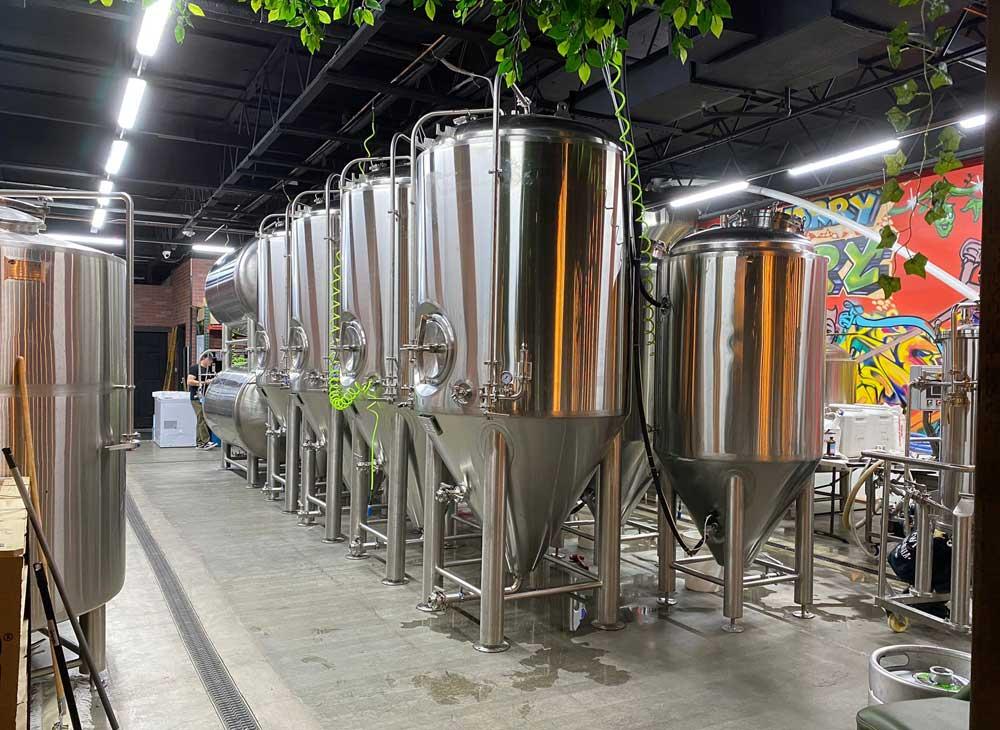
Beer fermenters must be able to provide the conditions required for microbial life and metabolism and be easy to operate and control to ensure that process conditions are met and high yields are obtained. Fermentation tanks allow the fermentation and storage of the winemaking process to take place in the same vessel. The sediment is collected at the bottom of the cone and then removed by opening a valve at the bottom until the liquid becomes clear and the beer is allowed to age.
For some processes, the fermenter is a closed vessel with a complex control system. For other simple processes, the fermenter is an open vessel, sometimes as simple as a tank with an opening.
The composition of the fermenter should have a tight construction, good liquid mixing properties, a good heat transfer rate in the mass transfer phase and be matched with reliable detection and control instruments.
This equipment is usually placed outdoors, with sterilised fresh wort and yeast entering the tank from the bottom. At the peak of fermentation, all cooling jackets are used to maintain the right fermentation temperature. The refrigerant is a glycol or alcohol solution, or ammonia can be used as a refrigerant. Carbon dioxide gas is vented from the top of the tank. The tanks and lids are fitted with manholes. The top of the tank is equipped with a pressure gauge, a safety valve and a glass sight glass. The bottom of the tank is fitted with a purified carbon dioxide gas tube. The tank is fitted with a sampling tube and a thermometer connection. The exterior of the unit is wrapped in good insulation to reduce cooling losses.
Advantages Of The Fermentation Tank - Brewery Equipment Manufacturing
1. low energy consumption and the small diameter of the pipes used allow for lower production costs
2. For yeast deposited at the bottom of the cone, the valve at the bottom of the cone can be opened to drain the yeast out of the tank and some of the yeast can be retained until the next use.
Vacuum In The Tank - Brewery Equipment Manufacturing
When a series of fermenters are rotated or cleaned in a closed state, a vacuum is created inside the tank. The large fermenters discharge very quickly, causing some negative pressure. A portion of the carbon dioxide gas remains in the tank. During the cleaning process the carbon dioxide may be removed and therefore a vacuum may also be created. Large vacuum fermenters should be equipped with a device to prevent vacuum from occurring. The function of the vacuum safety valve is to allow air into the tank in order to establish a pressure balance between the inside and outside of the tank.
Still have a problem on choosing the brewery equipment? We can help with your final decision. If you are looking for a turnkey solution for craft beer brewing system, please contact us. We are looking forward to working with you. Send an email now: [email protected]


.jpg)





Get A Quote